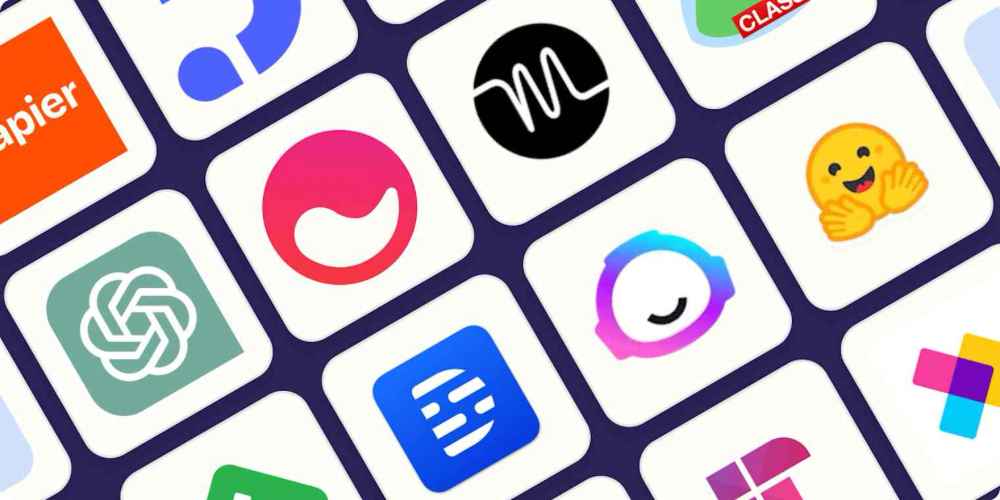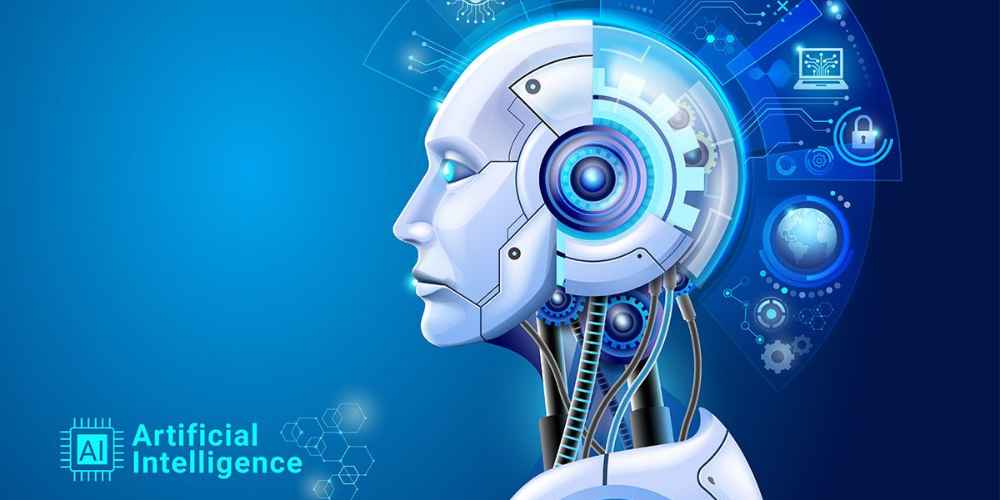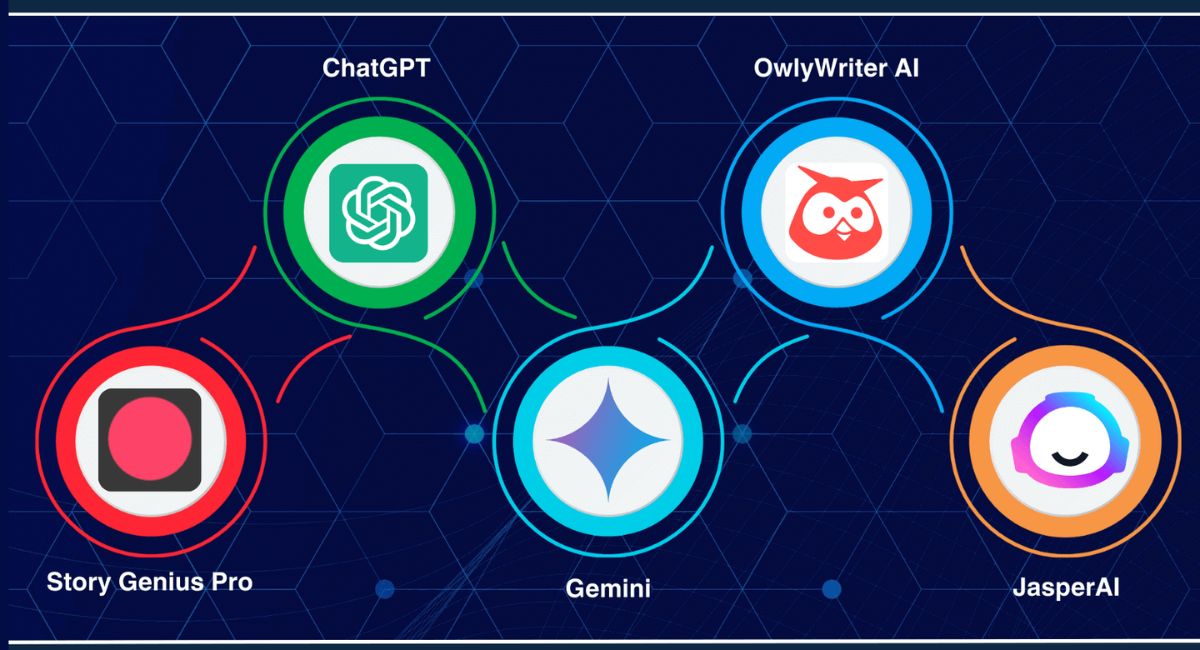Artificial Intelligence has become a fundamental part of modern business infrastructure. In 2025, companies leveraging AI are shown to outperform competitors by over 35% in productivity and profitability (source: McKinsey Global AI Survey, 2024). This performance gap is expected to widen as AI tools become more accessible, efficient, and industry-specific.
Today’s AI is not limited to niche use cases. It’s transforming how businesses:
- Streamline customer support with AI-powered chatbots and self-service portals
- Automate HR operations like resume screening, onboarding, and employee engagement tracking
- Optimize marketing efforts through AI-driven copywriting, customer segmentation, and campaign personalization
- Enhance financial forecasting with predictive analytics and real-time anomaly detection
In short, AI is now a business necessity, not a luxury or experimental tool. Whether you’re running a startup or managing a growing enterprise, integrating AI into your operations is essential to stay competitive in 2025 and beyond.
Read More:- Top 7 AI Tools Every Entrepreneur Should Use in 2025
Why AI Software Matters for Businesses in 2025
As we move further into 2025, AI is not just enhancing workflows, it’s transforming core business operations. Whether you’re in B2B services, retail, healthcare, or SaaS, AI software is becoming the backbone of decision-making and operational efficiency.
Here’s why it matters:
- Faster Decision-Making
AI analyzes large volumes of data in seconds, helping leaders make informed choices in real-time. - Cost Reduction
Intelligent automation reduces manual effort, cutting down costs in areas like customer service, HR, and marketing. - Personalized Customer Experience
AI software uses behavioral data to deliver tailored recommendations, messaging, and support resulting in higher satisfaction and retention. - Competitive Advantage
Businesses using AI tools can launch faster, market smarter, and serve customers better gaining an edge over traditional competitors.
Business Impact Snapshot:
| Business Function | Impact of AI Software | Efficiency Gains |
| Marketing | Predictive targeting, AI content generation | +30% |
| Sales | Lead scoring, conversation intelligence | +25% |
| Customer Support | AI chatbots, auto-routing, sentiment analysis | +40% |
| Finance | Fraud detection, automated reconciliation | +35% |
| HR & Hiring | Resume screening, attrition prediction | +20% |
The bottom line: In 2025, adopting AI software isn’t just about innovation, it’s about survival.
Key Features to Look For in the Best AI Software 2025
AI software is no longer a one-size-fits-all solution. In 2025, the best-performing tools share common core traits: they are secure, scalable, user-friendly, and capable of integrating with existing systems. Whether you’re choosing AI for marketing, sales, customer service, or analytics, selecting a platform with the right features ensures long-term business impact. This section highlights the must-have capabilities and desirable enhancements to look for before making your investment.
What Defines the Best AI Software in 2025?
Choosing the right AI tool requires more than just picking what’s trending. The best AI software in 2025 stands out by offering a balance of functionality, security, usability, and adaptability.
To help you make a smart choice, here’s a breakdown of must-have and good-to-have features.
Essential Features (Non-Negotiable)
Your AI software should include these core capabilities:
- Natural Language Processing (NLP)
Enables interaction with AI using human language, ideal for chatbots, search, and writing tools. - Data Security & Compliance
Ensure the tool adheres to regulations like GDPR, HIPAA, or CCPA. - Cloud-Based Access
Offers scalability, remote collaboration, and lower IT overhead. - No-Code or Low-Code Interface
Allows non-technical users to build workflows and use the tool without engineering support. - API & Integration Capabilities
Should integrate smoothly with CRM, ERP, CMS, and analytics platforms.
Good-to-Have Features (Adds Long-Term Value)
These features enhance usability and long-term ROI:
- AutoML (Automated Machine Learning)
Empowers businesses to build ML models without deep data science skills. - Multilingual Support
Useful for global businesses or customer support teams. - Real-Time Analytics Dashboard
Tracks insights, trends, and performance instantly. - Custom AI Training
Ability to fine-tune the tool on your own data for industry-specific needs.
Feature Comparison: Must-Have vs. Good-to-Have
Must-Have Features:
- Natural Language Processing (NLP)
- No-code or low-code interface
- Cloud access and scalability
- Security and compliance (GDPR, HIPAA)
- API and integration support
Good-to-Have Features:
- AutoML
- Multilingual support
- Real-time analytics dashboards
- Industry-specific models
- Custom AI training
Read More:- Moziah Bridges:The Young Entrepreneur Behind Mo’s Bows
Categories of AI Software in 2025
AI software in 2025 is no longer limited to generic use cases; it’s specialized by business function. From content creation to HR automation, today’s AI solutions are tailored to solve specific challenges across departments. This makes it easier for businesses to invest in tools that directly align with their operational needs and industry demands.
Understanding these categories helps you shortlist tools that fit your use case, rather than choosing a generalized platform that doesn’t serve your goals.
Most Common AI Software Categories in 2025
Below are five major categories of AI software dominating the business landscape in 2025:
- AI for Marketing
Automated content generation, campaign management, customer segmentation, and predictive analytics. - AI for Customer Support
Powers live chat, auto-responses, sentiment detection, and ticket classification. - AI for Human Resources (HR)
Streamlines recruitment, resume screening, employee performance tracking, and attrition prediction. - AI for Business Intelligence & Analytics
Transforms raw data into actionable insights, trend predictions, and real-time dashboards. - AI for Automation & Workflow Management
Eliminates repetitive tasks, manages approvals, and orchestrates multi-step business processes.
AI Software Categories, Use Cases, and Top Tools
| Category | Use Case Example | Leading Tools (2025) |
| Marketing | AI-generated ad copy, campaign A/B testing | Jasper AI, Copy.ai, Surfer AI |
| Customer Support | Chatbots, auto ticket assignment | Intercom AI, Zendesk AI |
| Human Resources | Resume parsing, bias-free screening | HireVue, Paradox.ai |
| Business Intelligence | Real-time reporting, forecasting | Power BI with Co-Pilot |
| Workflow Automation | Auto-approvals, document routing | UiPath, Zapier AI, Make.com |
Here’s the List of Best AI tools by Forbes
This classification helps you filter tools based on your business function, making your software evaluation process faster and more targeted.
Read More:- Ryan Heckman’s journey from Olympic skier to entrepreneur
How to Evaluate the Right AI Tool
With hundreds of AI tools available in 2025, choosing the right one can be overwhelming. The best approach is to match each option against your specific business goals, team capability, and integration needs. Rather than chasing trendy tools, focus on alignment, usability, and long-term value.
This section offers a step-by-step evaluation method to help you filter options and invest with confidence.
Ask These 5 Questions Before You Decide
- What exact problem am I solving with this AI tool?
Define a clear business goal e.g., faster customer support, improved content creation, or data-driven sales forecasting. - Can this software scale with my team and business growth?
Choose tools that offer flexible pricing and features that grow with your needs. - Does it meet security and compliance standards?
Ensure the tool supports GDPR, HIPAA, or CCPA (based on your industry). - Is it compatible with my existing tech stack?
Integration with your CRM, CMS, or BI platforms is critical for full functionality. - Is the learning curve manageable for my team?
Look for intuitive interfaces, training resources, or AI copilots that support user onboarding.
5-step numbered checklist:
- What problem am I solving with this tool?
- Is it scalable and future-proof?
- Does it meet my industry’s data privacy standards?
- Will it integrate with my current tech stack?
- Can my team use it without extensive training?
This evaluation framework prevents wasted time and cost, and helps you invest in AI software that delivers measurable business outcomes.
Best Tools by Function and Value
Choosing the best AI software in 2025 depends on your specific business needs whether you’re focused on content creation, automation, customer service, or sales intelligence. This year, the most trusted tools offer built-in AI features, robust integrations, and strong ROI in both time and efficiency.
The table below highlights some of the top-performing AI tools, what they’re best used for, and their standout features.
Top AI Software 2025 Comparison
| Tool | Best For | Price | Unique Feature |
| Jasper AI | Content Marketing | $49/mo | Long – Form Writing Wizard |
| ChatGPT 4.5 | General Assistant | $20/mo | Text, code, image input |
| Notion AI | Docs & Productivity | $10/mo | Embedded inside workspace |
| Copy.ai | Ads/Product Descriptions | $36/mo | Blog post generator |
| Salesforce AI | Sales Forecasting | Custom | CRM-based analytics |
| Zapier AI | Automation | $29/month | AI-driven workflows |
How to Use This Table Effectively
- For marketers → Jasper AI or Copy.ai are ideal.
- For general use or research teams → ChatGPT 4.5 offers versatile functionality.
- For internal operations and note-taking → Notion AI fits naturally.
- For sales and automation teams → Salesforce AI and Zapier AI are excellent choices.
These tools lead the market in 2025 not just because of advanced features, but because they’re easy to adopt, constantly evolving, and business-ready.
Industry-Wise Use Cases of AI Software
AI software is no longer confined to tech departments; it’s now deeply integrated across every major industry. In 2025, businesses are using AI to automate workflows, enhance customer experiences, reduce costs, and make faster decisions. This section highlights how different industries apply AI tools in practical, high-impact ways, helping you recognize the solutions most relevant to your business domain.
How Different Sectors Are Leveraging AI in 2025
AI adoption in 2025 is no longer limited to tech startups or Fortune 500s. From healthcare to finance, businesses across industries are using AI to solve high-impact challenges. Understanding how AI is used across sectors will help you identify which tools align best with your specific goals.
1. Healthcare
- AI is used for medical imaging analysis, patient triage, and symptom tracking.
- Chatbots support appointment scheduling and follow-up care.
- Predictive models assist in early disease detection and treatment planning.
2. Finance
- Fraud detection systems analyze transaction patterns in real-time.
- Robo-advisors provide investment insights based on market trends.
- AI automates compliance checks and financial reporting workflows.
3. Marketing
- AI tools like Jasper and Copy.ai generate ad copy, blogs, and landing pages.
- Behavioral data is analyzed to deliver personalized email campaigns.
- Customer segmentation and retargeting are powered by machine learning.
4. Retail and E-Commerce
- AI recommendation engines suggest products based on browsing behavior.
- Inventory management is optimized with predictive restocking.
- Visual search helps customers find items using images instead of keywords.
5. Human Resources
- AI screens resumes, ranks candidates, and conducts initial video assessments.
- Predictive analytics identify employee attrition risks.
- AI chatbots answer HR-related queries instantly.
6. Manufacturing
- Predictive maintenance reduces equipment downtime.
- AI monitors production lines for defects or process inefficiencies.
- Supply chain logistics are optimized using real-time data.
Read More:- Top 5 Gaming Companies in the world by Revenue
Pricing Breakdown of AI Tools in 2025
When selecting the best AI software for your business in 2025, pricing is a major factor but it’s not just about monthly cost. Businesses must consider value-for-money, scalability, usage-based models, and hidden costs like integrations or usage caps. This section outlines common pricing structures and what to expect from leading tools in the market.
Common AI Pricing Models to Know
- Freemium Plans
Many tools offer limited functionality for free. Good for testing, but lacks advanced features. - Tiered Monthly Subscriptions
Pricing typically scales based on features, users, or usage volume. Suitable for growing teams. - Usage-Based or Credit Systems
AI tools like OpenAI’s APIs or Jasper may use token or credit-based pricing, charging per word or API call. - Enterprise Custom Plans
Tailored pricing for large businesses with high usage, custom integrations, and priority support.
H3: What You’re Likely to Pay in 2025
- General-Purpose AI Tools (e.g., ChatGPT, Notion AI):
$10–$30/month for individuals, up to $100/month for teams. - AI Marketing & Writing Tools (e.g., Jasper, Copy.ai):
$36–$99/month depending on content volume and features. - Automation & Workflow Tools (e.g., Zapier AI):
$20–$60/month, with additional charges for premium tasks. - Enterprise AI Platforms (e.g., Salesforce AI, Microsoft Copilot):
Custom pricing—often $200/month+ depending on usage and scale
H3: Factors That Influence Cost
- Number of users
- Monthly usage volume (text, API calls, tasks)
- Required integrations and connectors
- Access to premium features like AutoML, training modules, or analytics
- Level of customer support (basic, priority, dedicated)
H3: Cost-Saving Tips
- Start with a free trial before committing
- Choose tools that integrate well with your stack to reduce duplication
- Bundle tools that offer multi-purpose functionality (e.g., Notion AI handles docs, notes, and tasks)
- Review pricing annually as your business scales
Common Mistakes to Avoid When Choosing AI Software
Even in 2025, many businesses waste time and money on AI tools that don’t deliver. Avoiding common mistakes ensures you pick software that’s effective, scalable, and aligned with your goals.
Top Mistakes to Watch Out For
- Chasing hype over business fit
Don’t choose a tool just because it’s popular and matches it to your needs. - Ignoring integration needs
A great tool that doesn’t work with your CRM or workflow is a dead end. - Overlooking hidden costs
Watch out for usage limits, add-on fees, and API charges. - Skipping the trial phase
Test the software with a real use case before buying. - Not involving your team
Choose tools your team can actually use and adopt quickly.
Quick Tip:
Make a checklist, involve decision-makers, and compare 2–3 tools before making a final decision.
Conclusion
In 2025, choosing the right AI software isn’t just smart, it’s essential. The best AI tools align with your goals, integrate with your systems, and scale as you grow. Don’t chase trends, focus on tools that deliver real results for your business.
Make the right choice, and let AI work for you, not the other way around.
Stay ahead with insider strategies, founder interviews, and exclusive toolkits. Whether you’re a growing entrepreneur or an established leader, The Business Legacy Magazine gives you the insights you need.
- Monthly or bi-monthly print editions
- Unlimited digital reads
- VIP networking and business event invitations
- Early access to premium interviews
👉 Subscribe now starting at just A$14.99! ( 1 Month Free )
FAQs: Choosing the Best AI Software in 2025
1. What is the best AI software in 2025 for small businesses?
Top choices include Jasper AI, Notion AI, Copy.ai, and Zapier AI all offer affordable plans with high usability and ROI.
2. How do I know if an AI tool is right for my business?
Check for clear use-case alignment, easy integration, scalability, and user-friendliness. Always test during a free trial.
3. What features should I prioritize in AI software?
Look for natural language processing, no-code interface, API integration, and security compliance (like GDPR).
4. Is free AI software reliable in 2025?
Free plans are good for trials, but serious business use usually requires paid plans for full features and support.
5. Can AI software replace human employees?
AI enhances productivity but doesn’t replace humans. It automates routine tasks, allowing your team to focus on strategy.
6. How much should I budget for AI tools?
Expect to pay $10–$100/month for business-grade tools. Enterprise tools may cost more based on scale and usage.
7. What industries benefit most from AI in 2025?
High adoption is seen in marketing, e-commerce, healthcare, HR, finance, and manufacturing.
8. Should I choose a general-purpose or niche AI tool?
For broad needs, use general tools like ChatGPT or Notion AI. For specialized use cases, go with industry-specific platforms.
9. Are AI tools safe and secure to use?
Yes, as long as you choose tools that follow data protection laws like GDPR, CCPA, or HIPAA (for healthcare).
10. How fast can I implement AI software in my business?
With the right tool, setup can be done in a few hours, and results can be seen within 1–2 weeks.















